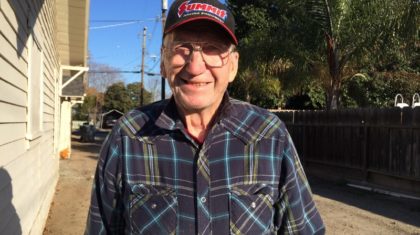
By Phil Goff, LEED AP, Senior Associate, Alta Planning + Design
As bike share continues to become increasingly popular in the U.S., Detroit can now be counted among the over 70 cities that feature the program. For Detroit, bike share is one component of the revitalization that has occurred in the central city over the past ten years. Transportation initiatives have played an important role in this transformation as a new streetcar line, improved bus service and a rapidly-evolving bike network have joined bike share to help change how residents and visitor get around Downtown and Midtown Detroit. Alta is proud to have played a role in the launch of bike share and the ongoing implementation of separated bike lanes.
The Launch of MoGo Bike Share
On May 23, the MoGo bike share program was launched in front of the administrative headquarters of Henry Ford Health Care, one of MoGo’s principal sponsors. It was the culmination of the work that began with Alta’s bike share feasibility study in 2013 for Wayne State University. Though the initial recommendation was for a 35-station first phase, the Downtown Detroit Partnership (DDP) and its sponsorship partners raised enough money for a 43-station system. The DDP selected Quebec-based PBSC as their technology vendor (similar dock-based equipment as New York Citibike, Chicago Divvy, and Boston/Cambridge Hubway), with operations by Shift Transit, a newcomer to the bike share industry.

Alta was selected to finalize the service-area master plan, complete the individual site plans, design the system maps for the kiosks and facilitate permitting from the City, Michigan DOT, FTA and other state agencies. The current service area includes Downtown and Midtown Detroit, along with Eastern Market, Mexicantown, Corktown, New Center and West Village. Within Downtown and Midtown, stations are generally located 1,000 feet apart with more-significant spacing in the adjacent neighborhoods. Ultimately, the City hopes to expand to a handful of additional neighborhoods with a potential 100-station system in the coming years.
Detroit Turns to Separated Bike Lanes
In the past five years, the City and state have begun an aggressive road diet program and many of the 4–7 lane roadways built for a mid-century city more than twice today’s population, lie devoid of significant traffic congestion. More recently, however, the City has emphasized separated bike lanes with parked cars buffering bicyclists. This has the added benefit of creating a safer context for bike share riders in Detroit. The network of separated bike lanes throughout central Detroit has been planned by Denmark-based Copenhagenize, while Alta is providing final design for the cycle track network downtown. This includes a sidewalk-grade separated bike lane along iconic Woodward Avenue, Detroit’s historic “main street” that now features the Q-line streetcar. Our bike share system planning located a number of stations adjacent to the separated bike lanes, providing a more-comfortable experience for bike share users, many of whom are expected to be novice bicyclists.

Detroit Bike Culture
MoGo and the separated bike lanes are supported by Detroit’s strong bike culture. One of the foundations of this culture is the weekly Slow Roll event that draws a diverse mix of Detroit’s population, numbering in the thousands during nice weather. Organizers see Slow Roll as a way to transform Detroit’s public space, allow riders to see parts of the city seldom-seen and, of course, to celebrate bicycling. Detroit’s do-it-yourself ethos pervades the bike culture as well, ranging from bike shop collectives to the Detroit Bikes start-up that manufactures simple, low-cost city bikes made by Detroiters.
One of the physical armatures of bike culture in Detroit is the Dequindre Cut. The former below-grade rail line has been transformed into a bicycle highway that connects Midtown and Eastern Market with the Detroit Riverfront. The Cut is lined with art — both sanctioned and non-sanctioned — and passes by abandoned factory buildings and new residential lofts projects alike. It is a metaphor for the city itself: one trying to re-imagine itself from its industrial past and usher in a new era of post-industrial livability based on neighborhood revitalization, art, and bicycling.



